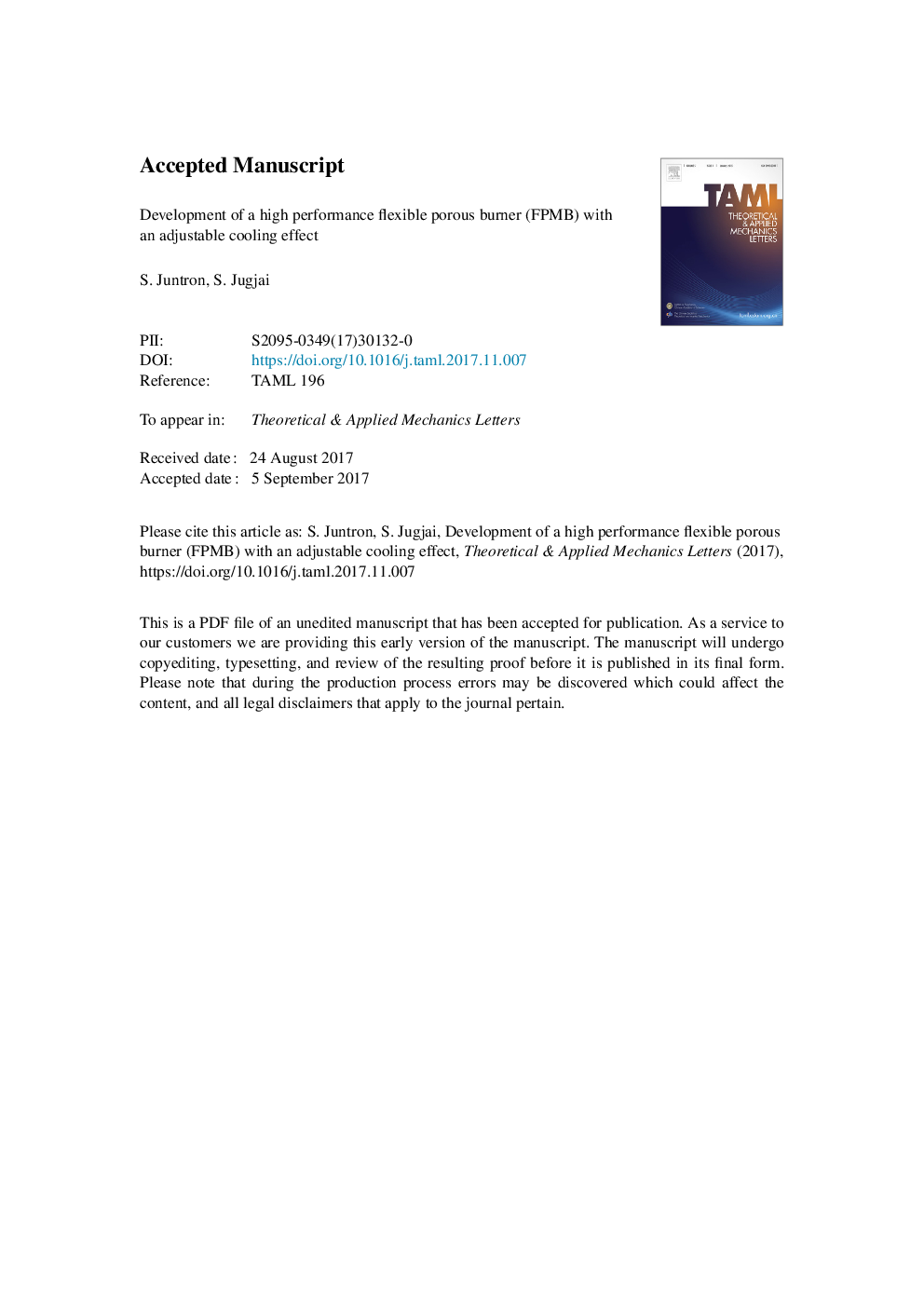| Article ID | Journal | Published Year | Pages | File Type |
|---|---|---|---|---|
| 7196486 | Theoretical and Applied Mechanics Letters | 2017 | 6 Pages |
Abstract
A high performance flexible porous medium burner that can burn gaseous and liquid fuel with different type of flames (premixed and non-premixed) is proposed. The merit of the combustion within porous medium is that heat is recirculated from the combustion gas to porous medium at upstream wherein vaporization is taken place (in case of liquid fuel) or preheated (in case of gaseous fuel) before mixing with the combustion air followed by combustion within another porous medium at downstream. In a former version of the high performance flexible porous medium burner, the upstream porous medium is incorporated with a cooling system using the combustion air as a coolants to prevent thermal decomposition of fuels and thus the burner clogging caused by carbon deposit within the porous medium can be avoided. However, the cooling effect cannot be properly controlled such that the boiling point of the liquid fuel is maintained at suitable value irrespective of the volume flow rate of the combustion air, which is linearly varied with the firing rate of the burner. In particular at the lean burn condition, where high air flow rate is required with high cooling effect with porous medium. This can result in the porous medium temperature lower than the corresponding boiling point of the liquid fuel and thus evaporation of the fuel is failed and the combustion is ceased. Therefore, method of controlling the cooling air flow rate in the porous medium is proposed and studied in order to appropriately control the porous medium temperature and maintain it at above the boiling point irrespective of the combustion conditions. In this research, experimental and computation analysis are used to design the flexible porous burner (FPMB), with adjustable cooling effect. The result shows that, the new design of FPMB which has temperature in the upstream porous medium is higher than boiling point and lower than thermal decomposition temperature of fuel (kerosene) at all conditions and can be operated at a wide range of equivalence ratio without fuel decomposition and fuel non-vaporization problem.
Keywords
Related Topics
Physical Sciences and Engineering
Engineering
Mechanical Engineering
Authors
S. Juntron, S. Jugjai,
